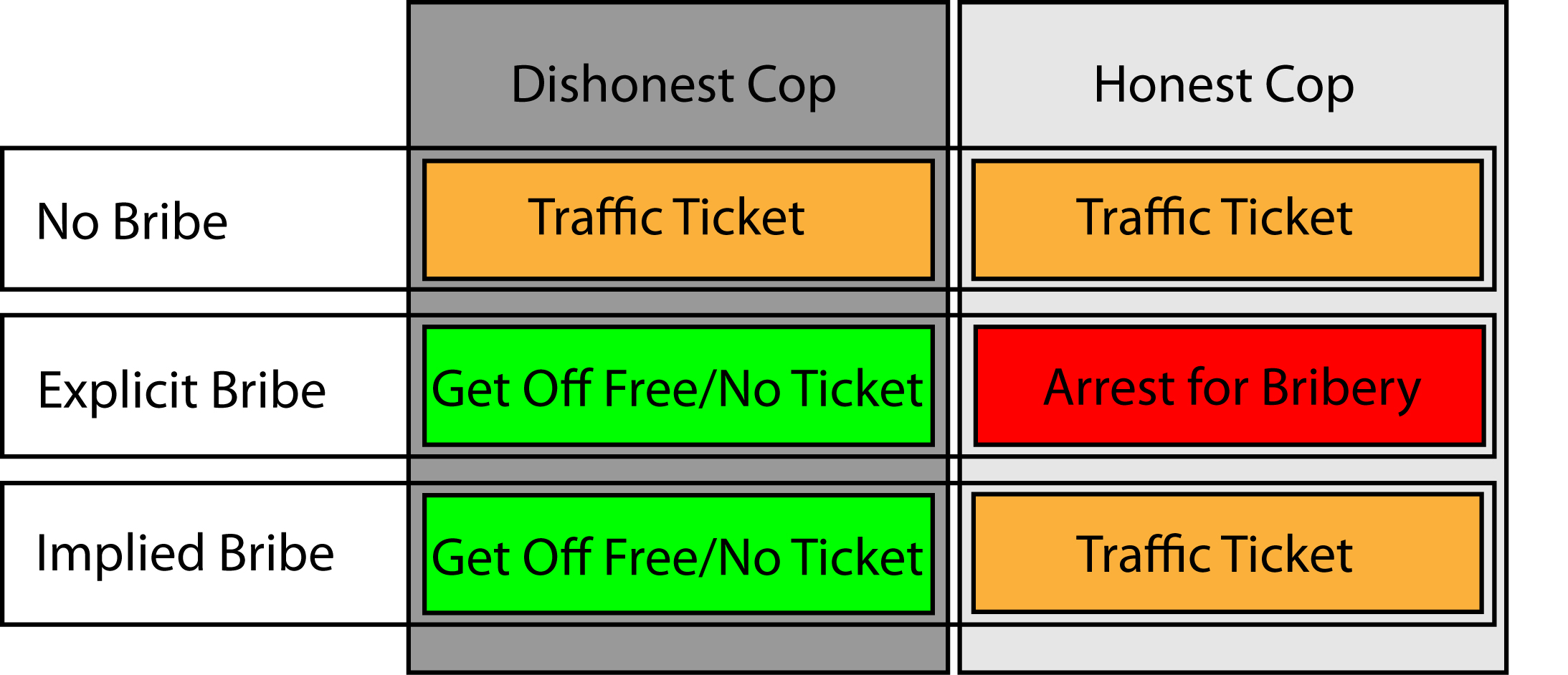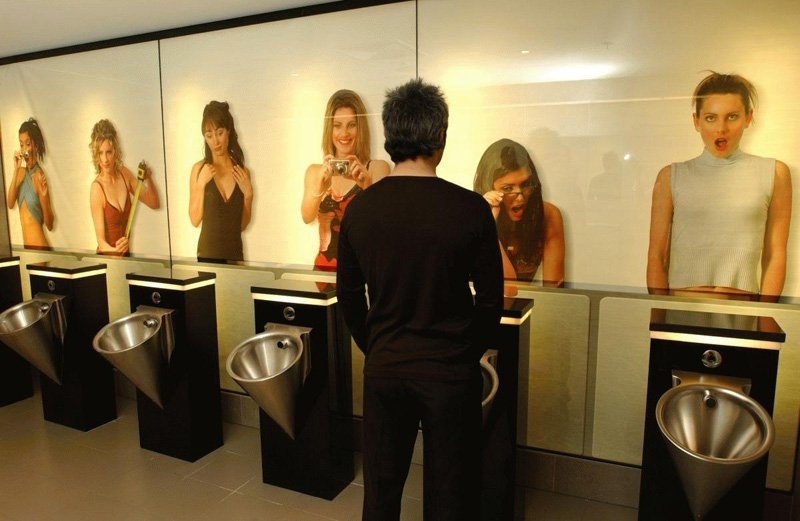We have to work within the boundaries of what’s possible given the history of the social system, the constraints of technology, the limitations of budgets, and cultural limits of the society wich endevers to implement the socio-technical system.
Tag Archive for product design
Background Knowledge, Language, Pipsqueak Articles
Ambiguity of Natural Language and Computer Language Interpretation
by Olga Werby •

In his book “The Stuff of Thought: Language as a Window into Human Nature”, Steven Pinker gave the following defense of language ambiguity: Imagine you are stopped by a traffic cop for a violation. You would rather not get a ticket, and consider offering the cop a bribe. You have options: no bribe and definitely get the ticket; try a bribe and hopefully the cop will accept and let you go free this time. But what if the cop is an honest cop and doesn’t accept bribes? Then you just bought yourself a trip to jail for bribing an officer! That’s the worst possible outcome — a traffic ticket is better than a trip to jail AND a traffic ticket. But what if you just “sort of” offer the officer a bribe? Wave a wad of cash without actually offering it to the officer? A dishonest cop might take you up on the offer and let you go without a ticket. An honest cop could ignore the whole cash waving and write a ticket; or he could ask for clarification: “Are you trying to bribe me?” “On, no, officer. Of course not!” And you are left with a traffic ticket…
Anchoring Errors, Background Knowledge, Background Knowledge Errors, Cognitive Blindness, Conceptual Design, Diagnostic Errors, Ethnographic & User Data, Interaction Design, Interface Design, Misapplication of Problem Solving Strategies, Perception, Perceptual Focus Errors, Pipsqueak Articles, Product Design Strategy, Scaffolding, Users, Working Memory
Task Analysis and Product Design
by Olga Werby •

Imagine your were given an assignment to develop a product that could help people eat healthy. How would you go about creating such a thing? What would you need to learn/understand? What is the right medium or technology vehicle for such a product? How would you even start? Below is a very brief outline of how to get started and the key tools necessary for the job. Project Goals The first order of business is figuring out the business needs and goals: What is the product really supposed to do? You have to ask this even if you are the one who is the client on this project. But, most probably, you are working for someone else — the client — and you have to start by understanding what your client really wants to do. You can do that in several ways: Analyzing the Request for Proposals: On many such projects, there will be an initial document, something like an RFP, that outlines the business goals and desires of the client. While some RFPs are very detailed and fully fleshed out, most are not. There are many reasons for this. Some clients are worried someone will “steal” their ideas and…
Conceptual Design, Cultural Bias, Cultural Differences, Interaction Design, Interface Design, Pipsqueak Articles, Product Design Strategy, Scaffolding
Going Potty…or iPotty!
by Olga Werby •
Conceptual Design, Cultural Bias, Pipsqueak Articles, Users
25 Awesome Quotes, 11 Ways, 10 Hateful Things, 8 Steps, 7 Reflections, 5 Hard Facts, 3 Reasons Why, 2 Questions, and 1 Mistake
by Olga Werby •

The latest in the professional social media writing is the creation of lists. Sing it with me: 25 Awesome Quotes 11 Secrets & 11 Ways 10 Hateful Things 8 Steps 7 Reflections 5 Seconds Test & 5 Hard Facts & 5 Ways 3 Audiences & 3 Big Trends & 3 Reasons 2 Questions 1 Career Mistake and a Partridge in a pear treeeeee…. What’s going on? Well, the new p-prim in town seems to be: “LinkedIn users like things in neatly organized lists.” And perhaps it is true — LinkedIn might see blogs written in this format as a good marketing trick, getting lots of hits. The more LinkedIn selects such format to feature, the more articles are written in this format — it is a self-replicating problem. In my classes, we talk of surface reading — how in today’s fast-moving culture, people peck and sample content in small bits and pieces: “Just give me the talking points, please.” And we see the results in the news, in PowerPoint presentations, and on LinkedIn’s Influencer Posts. Let’s just hope that some people still take the time to wade through details and read for deeper meaning.
Anchoring Errors, Conceptual Design, Cultural Bias, Cultural Differences, Pipsqueak Articles, Users
Google Apps New Pay Policy and Behavioral Economics
by Olga Werby •
Yesterday, Google flipped a switched on its Google Apps policy — starting with December 7th, 2012, Google Apps will no longer be free! The change is for Google Apps for Business and it effectively ends the ability to create free accounts for groups of 10 or fewer users (here’s Google’s announcement). Individuals could still have a personal account, but businesses will have to pay $50 per user, per year… That is NEW business customers will have to pay — if you had a business account prior to the announcement, you get to keep it on the same terms you’ve signed up for — free! But all new Google Apps business customers from this point forward will pay to play. There’s a lot of chatter about whether Google’s customers will pay or walk away, but I’m interested in the behavioral economics analysis of this change. Allow me describe a few experiments on anchoring — the psychological phenomena where individuals get attached to the first result they witness and base their subsequent decisions on that original priming. The experiments I’m going to describe come from two books: Dan Ariely’s “Predictably Irrational, Revised and Expanded Edition: The Hidden Forces That Shape Our Decisions”…
Conceptual Design, Cultural Bias, Cultural Differences, Pipsqueak Articles
Same Desire, Cultural Shift in Solution
by Olga Werby •

Over time, some desires have stayed constant: an aversion to pain, a wish for health, a longing to be loved, and a craving for wealth, power, and youth. But desires are susceptible to cultural shifts, and so they shift with the whim of fashion: the need to be thin, the hope to fit the norms of current beauty, the yearning for popularity, an aspiration for fame. Each generation comes up with solutions for their desired that are based in the cultural soup that nourished them. What is a cultural soup? Well, it’s a heady mixture of the following: anxiety — each generation has their own issues that they loose sleep over. In addition to the ones that their parents experienced, each generation can choose and pick and invent their own worries. affordances — affordances are available actions that are mired in context and situation. As context changes, affordances evolve. Each generation sees a unique subset of problem solutions. emotional design — each generation is stirred by issues and fashion that are uniquely their own. Emotional design is by definition tied to a particular group of people, be they joined in time, cause, or geography. Social value, user satisfaction, and emotional…

